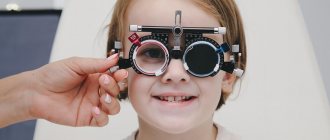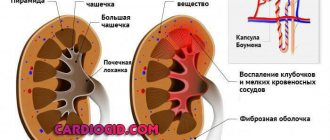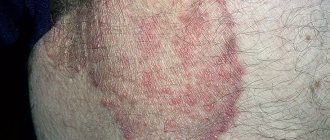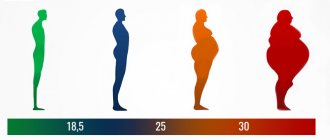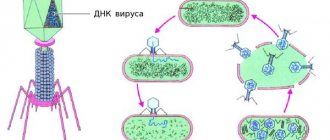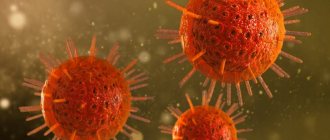Nowadays, the statement that the woman is always to blame for the impossibility of conceiving a child has long lost its relevance. Thanks to modern technologies, it has been possible to find out that quite often the woman has nothing to do with it, it’s all about the man, whose seminal fluid does not have sufficient quality to fertilize the egg.
Andrologists estimate that approximately 40% of married couples cannot conceive a child due to the fault of the man. However, many men, especially in our country, do not want to admit this fact and stubbornly refuse to undergo examination for sperm quality, for some reason believing that this is beneath their dignity. This is a dangerous misconception that can cause family breakdown. This article will discuss such a pathology as asthenozoospermia: what is it, how does it manifest itself, why does it occur and how to treat it?
Degrees of asthenozoospermia
The World Health Organization distinguishes several forms of germ cell motility:
- progressively mobile ones have a linear trajectory or a trajectory in a circle of large radius;
- non-progressively motile - these are all other sperm whose trajectory of movement differs from linear or slightly rounded;
- There is also a category of non-motile cells.
Sperm is considered capable of fertilization if it contains about 40% of sperm of the first category.
The following degrees of asthenozoospermia are distinguished:
- the first degree, or mild form, is determined if about 50% of motile sperm are present in the ejaculate;
- second degree, moderate, - motile germ cells make up 30–50% of the total;
- third degree, expressed - the number of motile cells is less than 30%.
Where to contact
It is preferable to treat asthenozoospermia with specialists who have sufficient qualifications and are focused on overcoming infertility. According to reviews, the best results usually come from visiting specialized reproductive clinics. In this case, it is advisable for both spouses to undergo the examination, because 40% of cases of problems with conception are caused by a combination of male and female factors. Therefore, it is recommended to supplement an appointment with an andrologist with a visit to a reproductologist.
The ICLINIC Reproductive Medicine Clinic is a modern, competent approach to the treatment of infertility of various etiologies and severity. We use progressive and effective techniques, high-quality equipment and proven therapeutic regimens. When conducting examinations, experienced ICLINIC specialists use only modern certified materials and technologies, focusing on WHO standards and current clinical recommendations.
The effectiveness of our work is recognized as the highest in St. Petersburg; in 2016 and 2021, ICLINIC took first place based on the results of IVF. We help couples facing infertility become happy parents.
Asthenozoospermia - causes of pathology development
There are several reasons for decreased sperm activity:
- deviations in the structure of the tail;
- increased plasma viscosity (viscosity);
- decrease in glucose concentration in ejaculate;
- severe agglutination due to increased levels of lactic acid. In other words, a shift in the acid-base balance to the acidic side;
- the presence of microorganisms on the surface of germ cells - chlamydia, mycoplasma, ureaplasma;
- genetic defects of germ cells.
Asthenozoospermia in men occurs for reasons caused by internal or external factors.
Internal factors include:
- autoimmune diseases;
- sexually transmitted diseases;
- inflammation of the appendages;
- the presence of antisperm antibodies that affect the reduction of sperm pulsation;
- viral infections;
- inflammatory processes;
- hormonal disorders.
Among the external factors it should be noted:
- exposure to radiation, electromagnetic waves, poisoning by industrial poisons;
- overheating and hypothermia;
- alcohol and nicotine intoxication;
- excessively frequent or infrequent sexual intercourse;
- psycho-emotional and physical stress;
- insufficient physical mobility, sedentary work;
- weakening of the immune system.
Why Scandinavia AVA-PETER
- A world-class high-tech IVF medical center. The first fertility clinic in Russia to be certified according to the international quality assessment system ISO 9001:2008. The clinic is equipped with the highest quality modern medical equipment that meets all modern standards and requirements.
- Vast experience, more than 20 years in the field of reproductive technologies. Many of the specialists were trained in leading European IVF clinics. The clinic’s specialists are regular participants in international and Russian conferences on infertility treatment.
- High efficiency of ongoing ART programs (effectiveness).
Diagnostics
Externally, the disease does not manifest itself in any way. The only symptom is the inability to conceive a child. Asthenozoospermia is possible even in men with normal sexual function. In some cases, the pathology is accompanied by decreased libido, erectile dysfunction, and premature ejaculation.
Diagnosis of asthenozoospermia is made on the basis of a spermogram performed twice with an interval of 1–2 months in order to have an idea of the complete picture of spermatogenesis in the body.
As additional studies, it is advisable to conduct an ultrasound examination of the prostate and scrotal organs, tests for the presence of inflammatory processes and infectious diseases, hormonal and genetic blood tests.
Is it possible to get pregnant
Pregnancy occurring naturally is only possible with grades 1 and 2 of asthenozoospermia after undergoing prescribed medical therapy. If therapy does not bring the desired result, it is necessary to resort to one of the reproductive technologies - IVF or artificial insemination. IVF using partner's sperm is effective in cases of 2nd and 1st degree pathology; IVF with ICSI using partner's sperm is used at any stage of the disease. In severe asthenozoospermia, only ICSI with donor sperm is effective.
It is very important to promptly seek help from a urologist-andrologist. If the pathology is treated ineffectively and incorrectly, male infertility cannot be avoided.
Treatment of asthenozoospermia
The method of treating the pathology is selected depending on the causes leading to asthenozoospermia.
In the absence of systemic diseases, to correct the situation it is often enough to eliminate negative lifestyle and environmental factors. The success of treatment for asthenozoospermia is facilitated by proper rest, a balanced diet, and moderate physical activity (swimming, cycling, running). To normalize the sperm renewal process, it is necessary to have regular sex life, preferably with a regular partner.
Asthenozoospermia is successfully treated in Moscow clinics. Treatment involves the use of a wide range of techniques, which are selected individually in each case and in most cases are aimed at improving blood supply to the testicles.
Surgery
Surgical methods for the treatment of asthenozoospermia are resorted to when there is a violation of the structure of the testicles and vas deferens, such as varicocele, hydrocele and others. Identified problems can be easily eliminated using minimally invasive procedures, which, while highly effective, do not require a long recovery period.
Non-specific treatments
In the absence of clearly defined causes of asthenozoospermia, nonspecific treatment methods are resorted to (physiotherapy, the use of bioactive additives - dietary supplements). These methods require a long course of treatment, at least three months. This period is due to the need to cover the entire period of spermatogenesis, which lasts on average 70–75 days.
The following physiotherapeutic methods show good results:
- low-intensity laser radiation, which significantly increases the body’s sensitivity to prescribed medications;
- extracorporeal shock wave therapy. The use of ESWT methods is aimed at stimulating blood circulation, destroying and removing calcium deposits;
- magnetotherapy. Its therapeutic effect is expressed in the anti-inflammatory and analgesic effect of the magnetic field.
The use of vitamin-mineral complexes
Properly selected vitamins help not only improve sperm quality, but also the overall strengthening of the body, which indirectly affects male fertility.
For the normal functioning of a man’s reproductive system, his body should not lack the following vitamins:
- vitamin C - is directly involved in the production of testosterone;
- vitamin E - accelerates the regeneration process and increases sperm activity, and also normalizes hormonal levels;
- B vitamins - have a positive effect on the process of spermatogenesis, promoting the production of healthy germ cells and increasing their number;
- zinc - promotes testosterone production;
- selenium - also involved in the production of testosterone, prevents the formation of defects in the tail part of sperm;
- vitamin H (lipoic acid) - normalizes metabolic processes and helps remove toxins from the body;
- Vitamin A - prevents the destruction of cell membranes and enhances sperm motility.
Hormone therapy
The use of hormonal drugs for asthenozoompermia is aimed at increasing testosterone production. The course of treatment is prescribed only by the attending physician. Self-medication is unacceptable, since an overdose of hormonal drugs inhibits the functioning of the adrenal glands and disrupts many other physiological processes.
Folk remedies
As an additional, supportive and restorative therapy, you can use folk remedies - herbal infusions, herbs, bee products.
How to avoid low sperm motility?
To ensure a fruitful conception, experts recommend adhering to the following recommendations:
- Overheating of the testicles reduces sperm motility, so it is recommended to refrain from baths, saunas, and heated car seats.
- The amount of alcohol consumed should not exceed 50 ml for strong drinks or 200 ml of dry wine.
- It is better to avoid smoking completely, since nicotine destroys essential vitamins, microelements and bioactive substances.
- Physical activity activates testosterone production. To do this, 30–40 minutes of exercise or swimming three times a week is enough.
- Stress, as the main factor in reducing blood circulation in the genitals, should be eliminated from your life as much as possible.
Low mobility can be treated in simple ways that are accessible to everyone. You just need to follow the suggested recommendations for 4–6 months.
Diet
There is no special diet for asthenozoospermia, however, if there is a specific disease that is the cause of the development of asthenozoospermia, an appropriate diet is prescribed, for example, Diet for prostatitis , Diet for prostate adenoma .
In general, regardless of the form of infertility, the diet should contain a sufficient amount of dietary supplements and vitamins. The diet must include foods containing essential amino acids: sea fish, cottage cheese, eggs, lean animal/poultry meat. Regular consumption of raw vegetable oils - corn, peanut, olive - is recommended; vegetables/fruits, honey, dried fruits, pumpkin seeds, nuts containing biologically active substances, vitamins and microelements.
Animal fats, smoked meats, refined carbohydrates, hot spices/seasonings, alcohol-containing/sweet carbonated drinks are subject to exclusion/restriction.
Symptoms
Since asthenozoospermia is just a conclusion from an analysis of the ejaculate, there are no specific symptoms. That is, the patient does not subjectively experience any symptoms of reproductive dysfunction: libido/erectile function does not suffer, ejaculation is normal, and since the composition of the ejaculate has no visible changes, the man can remain in the dark about his condition for a long time.
And only when faced with the fact that a natural pregnancy is impossible due to male infertility does he realize the situation. In this case, especially against the background of a long period of infertility/unsuccessful treatment and conflicts in the family, depressive states may develop on this basis.
In cases where asthenozoospermia is caused by diseases of the scrotal organs of an infectious-inflammatory nature ( vesiculitis , orchitis , epididymitis ) or other organs - prostatitis urethritis , corresponding symptoms develop.
List of sources
- Mikhailichenko V.V. Infertility in men (etiology, pathogenesis, diagnosis, treatment) // Textbook. - SPb.: Publishing house. North-Western State Medical University named after. I. I. Mechnikova, 2012. - 53 p.
- V.N. Shirshov: Current state of the problem of male infertility: review of clinical recommendations of the European Association of Urology, 2016.
- Kravtsova N. S., Rozhivanov R. V., Kurbatov D. G. Stimulation of spermatogenesis by gonadotropins and anti-estrogen in pathospermia and male infertility // Problems of endocrinology. 2016; 62(2): 37-41
- Alyaev. Yu. G., Grigoryan V.A., Chaly M.E. Disorders of sexual and reproductive function in men. - M.: Litterra-2006. — P. 52–96.
- Guide to urology / ed. ON THE. Lopatkina. - M.: Medicine, 1998. - T. 3. - P. 590-601.

